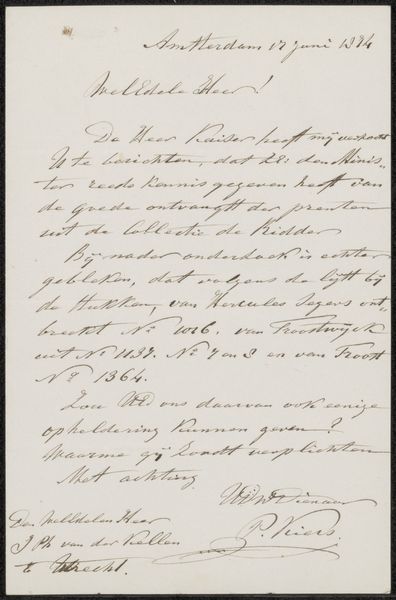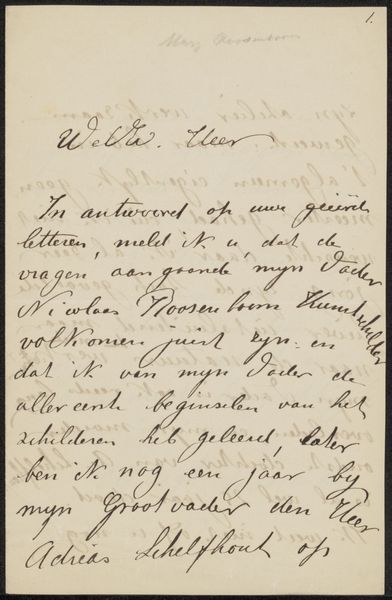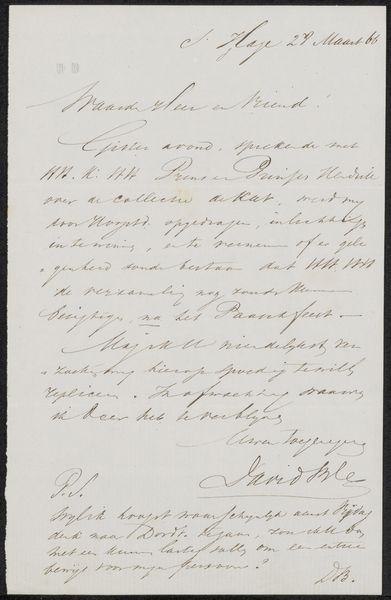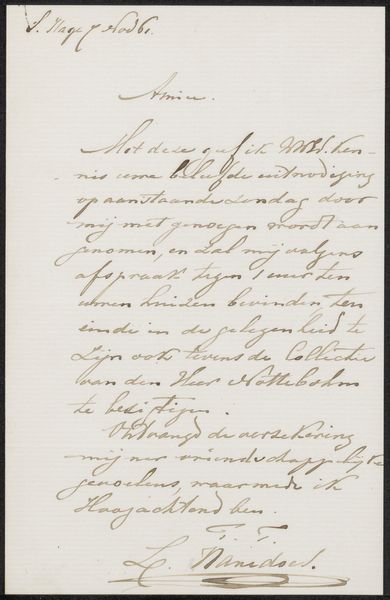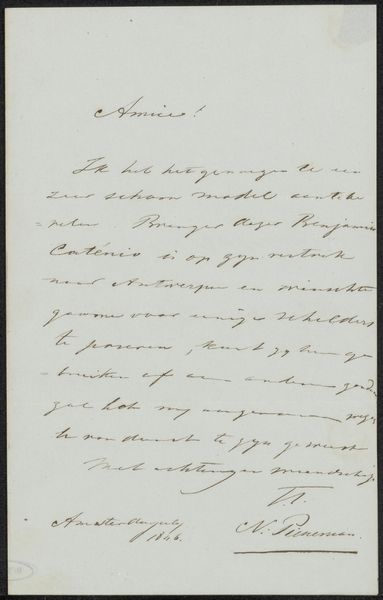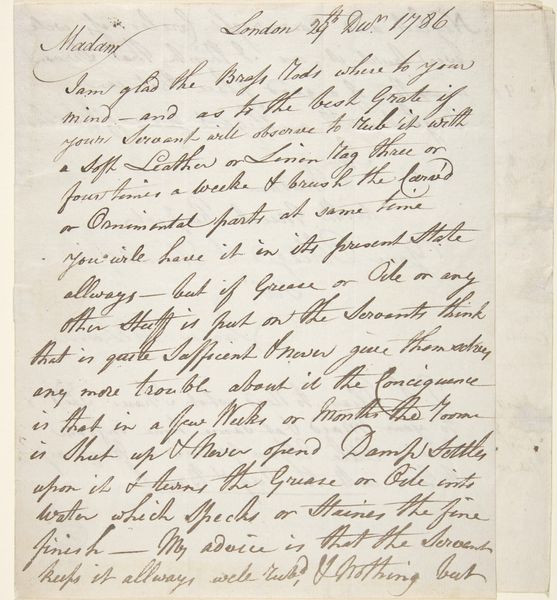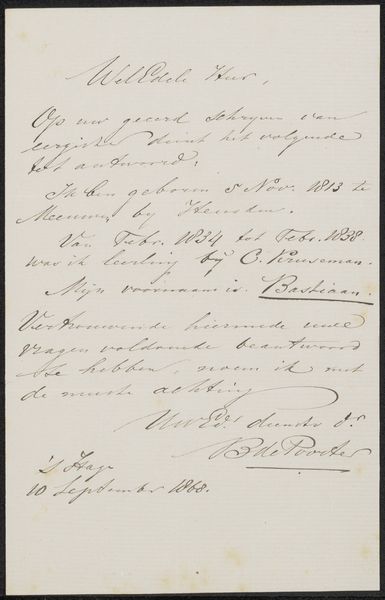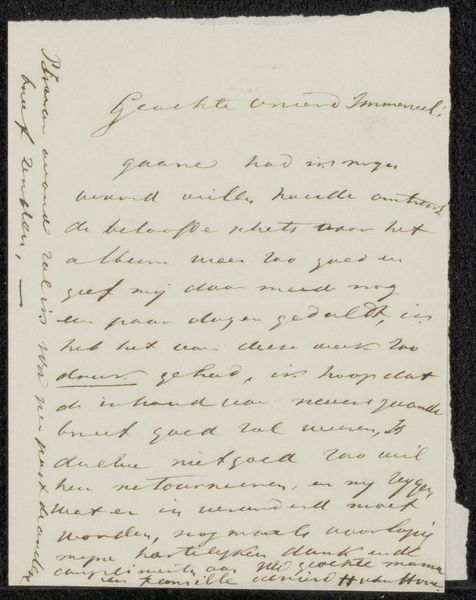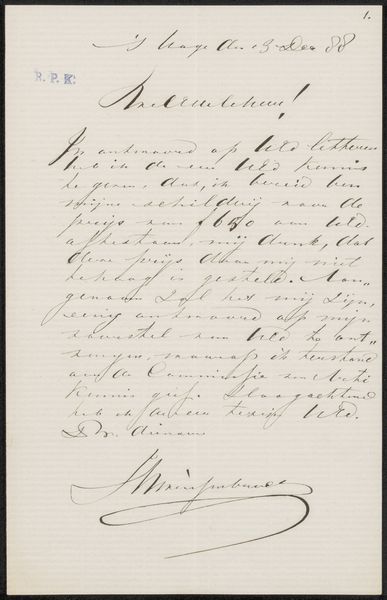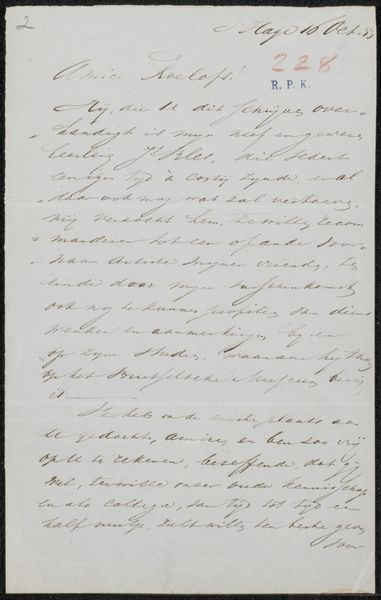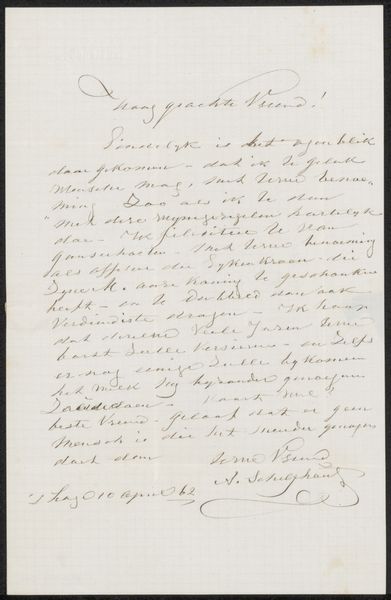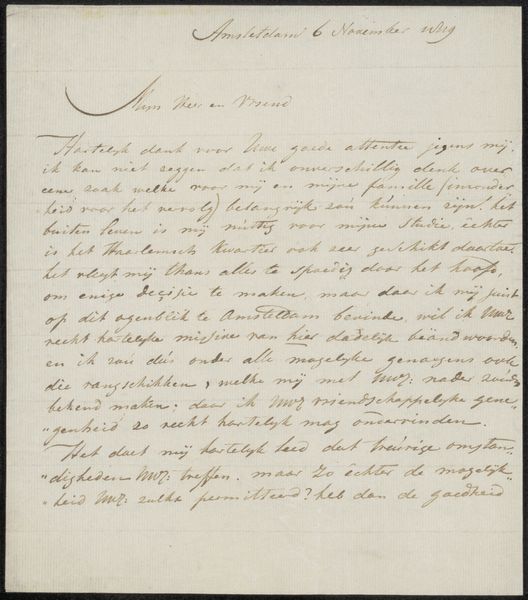
Letter from David Wilkie to William Newton c. 1829 - 1839
0:00
0:00
drawing, paper, ink
#
portrait
#
drawing
#
book
#
paper
#
ink
#
england
#
romanticism
Dimensions: 5 7/8 x 3 1/16 in. (14.92 x 7.78 cm) (image)12 1/2 x 9 in. (31.75 x 22.86 cm) (sheet)
Copyright: Public Domain
Curator: We're looking at "Letter from David Wilkie to William Newton," created sometime between 1829 and 1839. It’s ink on paper. Editor: The handwriting itself is so evocative! A web of thoughts, feelings, transferred from the artist’s mind to paper, across time. You can almost feel the weight of the quill. Curator: Absolutely. Letters were incredibly powerful objects, carrying emotional and artistic weight. Wilkie, a prominent Scottish painter known for his historical scenes and portraits, is writing to Newton. It’s interesting to note the carefully formed letters, characteristic of formal correspondence in the Romantic era. Editor: This particular texture is key, wouldn't you say? You can practically trace the pressure applied to each stroke, the absorption into the paper. Did he have a preferred brand of quill? Who prepared his inks? These daily materialities defined the man, his artistry. Curator: Well, from what I understand, he's expressing his gratitude towards another party, a Mr. Holford, for enabling him to dedicate the engraving of 'Columbus'. Columbus takes on a symbolic role here - perhaps referencing the artist's ambitious journey. It echoes that Romantic period ideal of exploration, not just geographical, but intellectual, spiritual exploration too. Editor: "Dedicate," though - such careful deployment of a loaded word. I bet Wilkie was highly involved in the physical printing process to truly dedicate his vision onto each work. It all adds up. You can understand why he had things to express personally by handwriting rather than having to use someone in the studio. Curator: A beautiful point, it reveals something very genuine and immediate. It adds another layer to our understanding, thinking of artists wrestling with the means of distributing their artwork in a new global marketplace. Editor: Precisely! Considering those daily realities, the tools and means, helps ground the work's cultural significance in the way it exists to us now. Curator: So next time when seeing a letter, consider its place not only as means of communication but as a cultural symbol with embedded social layers. Editor: Agreed. The history of that inkwell is waiting to be unearthed.
Comments
No comments
Be the first to comment and join the conversation on the ultimate creative platform.

